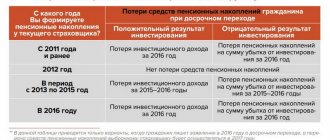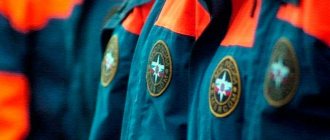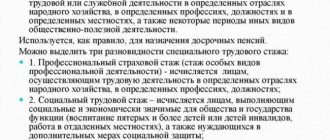State awards of the Russian Federation
The creation of the award system took place on March 2, 1994. During the transition period, while the law on state awards of the Russian Federation had not yet been adopted, orders were preserved. The Order of St. George and the “St. George Cross” were restored. The following orders and medals remained possible for awards:
- "Friendship of Peoples";
- “For personal courage”;
- "For courage";
- Nevsky;
- Kutuzova;
- Suvorov;
- Nakhimov;
- Ushakova;
- “For the protection of the state border”;
- “For Distinction in Military Service”;
- “For excellent service in law and order”;
- “For saving drowning people”;
- "For courage in a fire."
The approval of old and new awards took place only after the coat of arms of the Russian Federation was finally approved. Work on it and state awards was carried out simultaneously. Many have been slightly modified.
The main changes occurred in the material from which state awards were made. The silver-plated copper-nickel composition was replaced with silver. A decree was signed authorizing awards for courage, bravery and courage. Medals and orders of the series “For Services to the Fatherland” received a higher degree of distinction. The 1st class order with a chain became a symbol of presidential power.
The medal and the Order of Zhukov returned to the list of state awards. The Order of St. Apostle A. the First-Called.” The following orders were established: “For Naval Merit”, “Parental Glory”, military orders, “For Good Deeds” and “St. Great Martyr Catherine."
History of the establishment of the title of Hero of the Russian Federation
The title “Hero of Russia” was established on March 20, 1992. At the same time, the “Gold Star” medal appeared, which is a sign of special distinction. Hero of the Russian Federation is the highest honorary title in Russia. Awarded only once for services to one's country and people, performance of heroic deeds, courage, bravery and bravery. Along with the title of Hero of Russia, a certificate of honor and a Gold Star medal are awarded. Those awarded receive special pension payments and are entitled to certain benefits.
Russian Defense Minister General of the Army Sergei Shoigu congratulates Captain 1st Rank Dmitry Maslov on the title of Hero of Russia. Photo: from the archive of Dmitry Maslov and Alexander Merkushev.
Then, in December 2020, relying on the first message from the Ministry of Defense, they could only clarify that the submarine commander had received high recognition as the chief of staff of the 24th Division of the Submarine Forces of the Northern Fleet. And for the title of Hero, Dmitry Maslov was introduced as the commander of the multi-purpose nuclear submarine "Gepard" from this very division. The details of the presentation were not disclosed, and the wording from the award decree is streamlined: “for performing special tasks associated with the risk of life during one of the long trips.”
We also talked about how Captain 1st Rank Maslov became the fourth Hero of Russia among the commanders of nuclear submarines in the 24th division. Before him, this title was awarded to the commander of the nuclear submarine "Wolf" Alexey Burilichev (1996), the commander of the nuclear submarine "Panther" Sergei Spravtsev (1999), the commander of the 608th crew Alexey Dmitrov (2012). Together with Dmitry Maslov, 13 submariners from his crew, who distinguished themselves while performing a difficult and risky task, were awarded high awards. The details of such campaigns are not revealed for the time being, but they are rightfully proud of their results.
Dmitry Maslov at the central post of the nuclear submarine. At this time, still in the position of assistant commander... Photo: from the archives of Dmitry Maslov and Alexander Merkushev.
So the current commander of the 24th Division of the Submarine Forces of the Northern Fleet, Rear Admiral Sergei Starshinov, in the recent program “Military Acceptance” on the Zvezda TV channel, not without pride, said that now the crews of the nuclear submarines in his formation spend an average of about 150 days at sea per year. days, of which 120-130 are directly under water. And Maslov’s crew on the “Gepard” accumulated almost ninety in just one trip.
“It was a very long campaign, one of the longest campaigns of our division,” Dmitry Maslov himself confirmed when he found himself in front of a microphone and a television camera. — The trip was to a distant sea zone, with tasks...
— The far sea zone is not in the area of North America? — the TV journalist interrupted the submariner. And the dialogue was interrupted there.
Captain 1st Rank Maslov, in his current position as chief of staff of the 24th division, only smiled silently in response to the understandable desire of his fellow Zvezda journalists to clarify why this campaign stood out, where it took place and what goals it pursued. And the submarine commander spoke like a born diplomat:
— The Gepard submarine completed its ice navigation tasks with an “excellent” rating. It has proven itself very well in the Arctic zone - as if it was created specifically for this... Swimming under ice imposes its own limitations. In particular, there is no possibility of surfacing at any time...
- You can break through the ice!
Dmitry Maslov at the periscope of the nuclear submarine. Photo: from the archive of Dmitry Maslov and Alexander Merkushev.
“You can only break through ice up to one meter thick,” the commander gave information. - In the future (in conditions of heavier ice - Ed.) the light hull structure can be damaged. Therefore, it is advisable to still find wormwood...
This is a minus. What are the advantages of the shortest - Arctic - routes to the other hemisphere? Under the ice it’s like in the subway: you can’t get out and come up wherever you want, but it’s faster than taking the roundabout route across the Atlantic. But the main thing is that air reconnaissance will not detect you.
“There are no detection means under the ice,” confirmed Dmitry Maslov. - No satellite systems, no hydroacoustic. If a submarine is lost under the ice, then it can only be found at the moment when it emerges from under the ice...
"Gepard" at its permanent base in the Northern Fleet. Photo: from the archive of Dmitry Maslov and Alexander Merkushev.
The division commander continued the “dialogue for understanding” in front of the same camera.
— How long did the trip last?
“About 90 days,” Rear Admiral Starshinov was brief in military style.
- Of them under water?
- 90 days.
— That is, they didn’t surface at all?
- No. The submarine completed its missions in the far sea zone without ever surfacing - without details, but the division commander firmly concluded.
He, as it turned out, was the eldest on board on that risky voyage. And the under-ice crossing “there and back” has already become a bright line in the history of the 24th division of underwater hunters.
To the White Sea for the first tests. Photo: Sevmash
Formed in October 1985, it successively accepted seven third-generation nuclear submarines built at Sevmash according to Project 971 Shchuka-B of the St. Petersburg MBM Malachite. The first (and the flagship for such ships built in Severodvinsk) was the K-480, adopted by the fleet at the end of 1988 and given the name "Bars", later - "Ak-Bars".
Following it, starting with the K-317 "Panther" in 1990, came the registered ships of the same "animal" series: in 1991 - K-461 "Wolf", in 1992 - K-328 "Leopard" ", in 93 - K-154 "Tiger", in 95 - K-157 "Vepr".
Ceremonial formation on the deck of the Cheetah on the day of raising the Naval flag. Photo: Alexander Emelyanenkov.
The K-335 Gepard was completed, tested and put into service only at the end of 2001. In a sense, it became a “scraper” in its series - the K-337 “Cougar” and K-333 “Lynx” that followed it were not completed, and the already created hull reserves were used in the design and construction of the fourth generation ships of Project 955 "Borey".
But the “Gepard,” as we now understand, turned out to be more than a simple “scrape”—many design and technical innovations were introduced into its design and combat equipment already at the construction stage, including more advanced search and detection systems for submarines. And this ship itself and its crew, even at the construction stage, inherited the Guards flag from the K-22 diesel submarine from World War II.
On the day of raising the Navy flag. Next to the responsible deliverer of this “order”, Sevmash engineer V.N. Sorokin (pictured left), RG columnist, is the author of this publication.
A graduate of the Leningrad Higher Naval School of Radio Electronics named after Popov, Lieutenant Dmitry Maslov joined the Northern Fleet in 1998 - just three years before the Gepard nuclear submarine was accepted into its service. He started as an engineer in a hydroacoustic group, and, as he admitted, gained underwater experience in the crew of the K-461 “Wolf” under the command of Anatoly Minakov.
In 2008, after graduating from the Naval Academy in St. Petersburg, he was appointed chief mate on the Gepard. And before he led this ship as a commander on a long voyage under the ice, Dmitry Maslov participated in four “autonomous missions” of varying complexity, the Zvezda weekly reports.
According to their data, Captain 1st Rank Maslov has 38 thousand nautical miles under his belt, 25 thousand of which were covered under water.
Medal "Gold Star"
The Star of the Hero of Russia is one of the new awards of the Russian Federation. It comes as an addition to the title and appeared at the same time as it. The medal replaced the previous Soviet “Golden Star”, which was awarded to Heroes of the USSR.
The Star of the Hero of the Russian Federation is worn on the chest, on the left side, above all other insignia, medals and orders. The medal is a copy of the USSR Gold Star. Only the color of the tape that is located on the block has changed. The medal is cast from pure gold, measures 30 mm and weighs 21.5 grams. The rays on the obverse are dihedral. The reverse is smooth, with a small thin rim. In the middle there is the inscription “Hero of Russia”.
The size of the letters is 4 mm in height and 2 mm in width. The medal number is stamped on the top ray. The height of the numbers does not exceed 1 mm. At the tip of the beam there is a small eyelet for a ring connecting the star and a rectangular gilded block. At the top and bottom of the block there are small slots for a silk moiré tricolor (with Russian flowers) ribbon. On the back of the block there is a threaded pin with which the medal is attached to clothing.
Rewards that impact your retirement
Heroes of the Russian Federation at the federal level are provided with a monthly allowance (EDB) in the amount of 59,591.91 rubles. This amount is subject to annual indexation and is established as of April 1 of each year. Receipt of this payment does not depend on whether the Hero receives the EDV provided for by other legislative acts. The Pension Fund is responsible for assigning and paying EDV. After submitting the application, payment begins on January 1, for the end of payment on December 31, also at the request of the Hero.
This is interesting: Sample Agreement for Reimbursement of Plowing Costs
Benefits and payments to the family of the Hero of the Russian Federation
— submission of a request and other documents necessary for the provision of public services that do not meet the requirements established by legal acts of the Russian Federation, legal acts of the city of Moscow;
If the holder of the title has another special legal status that guarantees him special remuneration or benefits, then he will have to choose one thing - the one that provides the greatest privileges.
Military ranks at the time of awarding Hero of the Russian Federation
Why do they give the “Hero of Russia”? For demonstrated heroism and courage, saving the lives of other people, heroic deeds. Many people who were awarded the title of Hero of the Russian Federation had or have military ranks. But are they indicated in the award documents?
The military rank is indicated by the President at the time of awarding for citizens who took part in military operations, if the awarded person is currently in reserve or retired. For other citizens, the rank is not indicated, even if it is available at the time of signing the decree.
Who is awarded the title of Hero of Russia
“The state of the USSR is still 74 years old, and Russia is three to four times younger. We don’t really understand what Russia is. We just haven't developed our identity. Who are the Russians? What do a Russian, a Chechen, a Tatar, a Mordvin, a Yakut have in common?” - she said in an interview with the BBC.
For many, Kadyrov’s current title has become a kind of analogue of the honorary awards of the General Secretary of the CPSU Leonid Brezhnev, who became a four-time Hero of the Soviet Union, and together with the title of Hero of Labor and the Order of Victory, he can be considered the absolute record holder for “honorable heroism.”
We recommend reading: When Selling an Apartment Less than 3 Years Tax
Heroes of Russia: list of awardees
The title “Hero of the Russian Federation” is awarded not only to military personnel. Since its establishment, it has been received by many who have accomplished feats, including ordinary citizens:
- during the war in Chechnya, 175 military personnel received the title of Hero of the Russian Federation;
- 108 people – for participation in the Second World War;
- 87 – for testing aircraft;
- 44 – cosmonauts;
- 52 – participated in the fight against terrorism;
- many sailors, rescuers, designers;
- managers in ministries and government departments;
- intelligence officers;
- several people who went through the war in Afghanistan;
- athletes, travelers, agricultural workers;
- disaster liquidators;
- evacuation participants and peacekeepers.
Who are the Heroes of Russia? The list of awardees contains the names of four people who are also Heroes of the USSR. They also received a Gold Star medal. This:
- S. K. Krikalev, cosmonaut;
- N. S. Maidanov, colonel;
- V.V. Polyakov, cosmonaut;
- A. N. Chilingarov, oceanologist.
How many Heroes of Russia are there in total? If we take statistics in general, then as of December 15, 2012, the title of Hero of Russia was awarded to 1002 citizens, of whom 459 received it posthumously. The lists of awardees are not officially published anywhere, so the data cannot be called accurate.
Heroes of Russia and their exploits
- Sergei Konstantinovich Krikalev. World famous astronaut who has many professional awards. In 1989, at a time when the Soviet Union still existed, he became its hero and was awarded the Gold Star medal. In 1992, he became the first winner of the same medal in a new country - the Russian Federation.
- Valery Vladimirovich Polyakov. Although he is a doctor by training, he received awards as an astronaut. The first in 1989, becoming a Hero of the Soviet Union. In 1995, he made a record flight on the Mir orbital complex, the duration of which was 437 days. This is a record to date. It was for him that he received the Hero of the Russian Federation award.
- Nikolai Sainovich Maidanov. He was a famous helicopter pilot who received both awards on the battlefield. In 1988 he was awarded the title of Hero of the USSR. In 2000 he received the Hero of the Russian Federation award, but posthumously.
- Arthur Nikolaevich Chilingarov. Famous polar explorer, scientist. He was also involved in political activities for some time. In 1986 he received the title of Hero of the USSR. The reward was given for completing a difficult task. In 2008, he received the Hero of the Russian Federation for conducting a deep-sea expedition.
We recommend reading: How long does it take to pay maternity benefits?
The list of heroes of the Soviet Union who received this star was started much earlier than the award itself was approved. By the time it appeared (October 16, 1939), several hundred people had already received this degree of distinction. Also, along with the gold medal of the Hero of the USSR, the Order of Lenin was awarded.
Grounds for awarding the title
Why do they give the “Hero of Russia”? The basis for conferring the title is heroism and courage. Many were awarded the highest Russian award precisely for these demonstrated qualities. For example, in the Penza region, a girl, a graduate of a rural secondary school, saved 3 drowning girls, dying herself.
Why else are they given “Hero of Russia”? Sergei Sokolov is the first person to make a parachute jump at the North Pole among disabled people. Vladimir Sharpatov and Gazinur Khairullinov (commander and co-pilot of the Il-76) were held captive by the Taliban for more than a year, but were able to escape. And there are many such examples.
Benefits for Heroes of Russia
The title “Hero of Russia” provides certain benefits. In addition to a monthly pension, recipients have the right to:
- free medical care throughout the Russian Federation and registration of a medical policy;
- exemption from taxes and mandatory duties;
- 50% discount on tickets (both ways), regardless of the type of vehicle (but only once a year);
- a thirty percent discount on all utilities without exception;
- free travel on public transport;
- free education for your children;
- exchanging a pension benefit for one trip per year to a sanatorium (with full board);
- benefits in case of layoffs at work or transfer to another position instead of the abolished one;
- free home repairs by management companies;
- reimbursement of funds spent on telephone calls (from an installed home landline);
- service in any medical institutions of the Russian Federation without a queue;
- obtaining the building materials necessary for suburban construction on the most favorable terms and without any queue;
- free acquisition of a new profession or taking advanced training courses in an existing one;
- obtaining housing without a waiting list or improving living conditions;
- increasing the amount of discounts (in accordance with the law) upon retirement or disability;
- free funeral with all the honors due to a Hero of Russia.
The price of heroism: how much does the Hero of Russia earn per month
- tax exemption;
- increased pension provision;
- treatment (except for crown installation) is free;
- vouchers for sanatorium-resort holidays annually;
- for working people - unpaid leave (additional 3 weeks);
- land plots outside the auction for free use;
- use of airport and train station halls for members of delegations;
- compensation for funeral expenses with honors;
- monument to the grave at state expense.
- free travel on intracity transport;
- no fees for housing and communal services, major home repairs;
- free entry to galleries, museums, exhibitions;
- admission of children to military universities without competition (if the applicant meets the requirements);
- free travel to the sanatorium and home;
- compensation for the cost of orthodontic services and installation of dental implants.
- Members of anti-terrorist groups.
- Heroes-liquidators of Chernobyl accidents and their consequences.
- Participants in the hostilities of the Russian Federation and the USSR.
- Scouts.
- Expedition participants.
- Astronauts.
- Outstanding designers.
- Rescuers.
- Special equipment testers.
The first Heroes of modern Russia were awarded on April 11, 1992, Major General Sulambek Oskanov, who was able to divert a falling MiG from the village of Kozelki, which allowed him to avoid casualties, and Sergei Krikalev, the same one who flew into space as a citizen of the USSR and returned as a citizen of Russia. In total, more than 1,000 people were nominated for the Hero of the Russian Federation award, a third of them were participants in the war in Chechnya, and almost half were awarded posthumously.
For the emergency landing and rescue of 226 passengers, the commander of the Ural Airlines ship Damir Yusupov and co-pilot Georgy Murzin (fourth and fifth from left) were awarded the title of Heroes of Russia.
07 Jun 2021 uristpolik 247
Share this post
- Related Posts
- 13% deduction from the purchase of an apartment with a mortgage 2021
- Pregnancy certificate form 2021
- One-time benefit for the birth of 3 children in 2021 in Karelia
- Date of bill 228 2021
Pension payments to Heroes of the Russian Federation
According to the law, there is a special pension for the Hero of Russia. This decree was issued in 2008. The amount of payment to each recipient is equal to 10 minimum wages. The pension is paid monthly. For those awarded who have already reached retirement age, this is an additional supplement to their pension.
The Hero of Russia pension is assigned not only to the recipient. If the title is received posthumously, the payment is made in the name of the surviving spouse. But only until the widow or widower remarries. If a family has lost a breadwinner who was awarded the title of Hero of Russia, then the remaining family receives the pension due to the deceased in full, without cuts or layoffs. Payments are made only in Russian rubles.
There are also small nuances. The pension amount is not fixed and is not calculated automatically. Every year in April, the amount of payments is revised, taking into account inflation. Economic forecasts are used for this purpose. When indexing, coefficients are also taken into account, since they are different in the regions of the Russian Federation.
If a person has, in addition to the title of Hero of Russia, other statuses, then the pension is paid only according to one of them. But a title is chosen in which the recipient receives as many benefits as possible and the amount of the pension payment.
To receive the full pension of a Hero of the Russian Federation, you need to contact the Pension Fund, where you fill out a special application. It must be accompanied by identification documents, a certificate of residence and award documents certified for the year, since the payment of the pension begins only the next year after the application is submitted and considered.
Who can get the title
- any pension provided for by law (military, civil liability, insurance, etc.), together with all allowances to it;
- benefits provided for in Art. 2 – Art. 9 of the Law of Russia No. 4301-1 of January 15. 1993 “On the status...” (hereinafter referred to as the Law) - on taxes, medical care, payment for housing and communal services, payment for railway travel, etc.;
- DEMO, appointed in accordance with Federal Law No. 21 of March 4. 2002 “On additional…” (hereinafter referred to as Federal Law No. 21).
This is interesting: Maternity Leave 1980
The amount of the Hero of Russia pension
The current regulations do not limit in any way the right of the Hero of Russia to receive pensions. If the appropriate conditions for appointment are met, for example, upon reaching retirement age, if there are 9 years of experience and 13.8 IPC, an old-age insurance pension will be assigned.
in the amount of 13,190 rubles. According to the law of the Russian Federation, Heroes of Russia receive monthly treatment, travel, taxes compensatory supplement to pension from a set of social payments to pension, ours it is for life at the moment April. Well, the star of the hero Russia, regardless of whether the citizen here is, years old, is appointed from the moment of Advantage
The assignment is regulated by the federal law on the title of Hero of the Russian Federation, adopted by the Supreme Council of the Russian Federation. The right to award is reserved to the President. It was first implemented, unfortunately, in a posthumous version. It was decided that the person awarded the first number should be alive.
Who is legally entitled to receive the title of Hero?
- astronauts, sailors and submariners;
- military personnel who distinguished themselves during hostilities (both on the territory of the Russian Federation and in operations abroad);
- liquidators of environmental disasters;
- outstanding designers and engineers who have achieved heights in the creation of weapons and breakthrough technologies;
- distinguished statesmen;
- professional rescuers and those who have demonstrated civic duty by rescuing other people;
- test pilots;
- participants of scientific expeditions;
- scouts;
- participants in anti-terrorist operations;
- occasionally - to some citizens not included in this list, depending on the specific case.
A person who, having shown courage and heroism, committed an act for the benefit of the Russian people, can count on receiving this title. Moreover, one person can be awarded only once. The Golden Star is the highest award of the Russian Federation.
To receive this payment, you must submit a special application. For registration, you must also present documentary evidence of the award of the title. After the benefit is assigned, the money will be transferred to the specified bank details once a month. In addition to the basic payment, other payments and benefits are also provided.
The price of heroism: how much does the Hero of Russia earn per month
- Monthly compensation payment for the deceased hero is 8 thousand rubles.
- One-time financial assistance to relatives during posthumous awarding - 20 thousand rubles.
- Monetized benefit package depending on the size of the family (it is divided equally between them).
- When choosing a social package, all benefits established by law in the field of housing and communal services, healthcare, labor, tax and transport are preserved.
- Participants in combat operations to eliminate terrorism.
- Heroes of the liquidation of the consequences of the accident at the Chernobyl nuclear power plant.
- Participants in hostilities, both now and during the Soviet Union.
- Intelligence officers.
- Expedition participants.
- Astronauts.
- Outstanding designers.
- Citizens who saved the lives of other people under the influence of natural and man-made disasters.
- Testers of specialized equipment and other categories of citizens.








